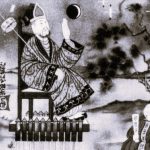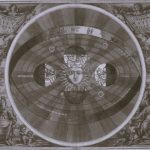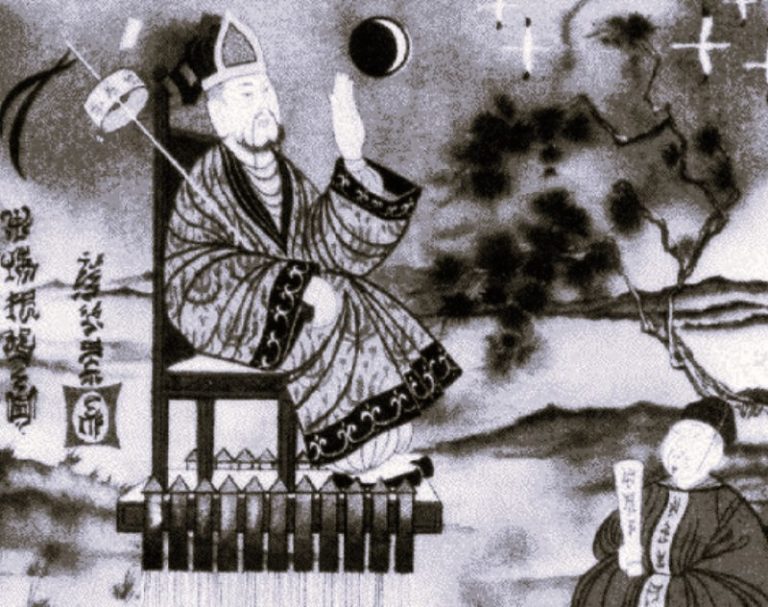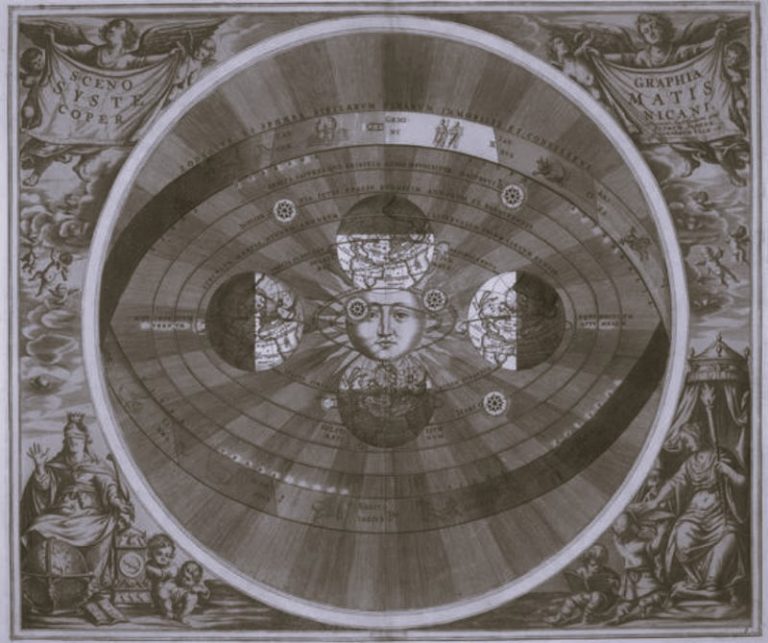
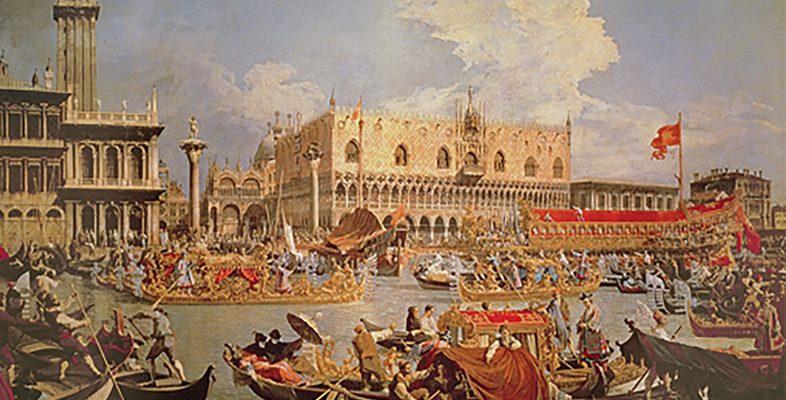
Examining the cultural heritage of Early Modern Europe and its influence in contemporary thought.
By Angel Solis, Mariah Radue, and Nora Katz
Introduction
The content included here is directly related to the strong influence of the cultural heritage of Early Modern Europe in the Western world and the importance of these documents and works as representations of Early Modern thought. In comparison to earlier music, Early Modern European music had more emotional phrases and focused more on blending musical textures. The art of the Early Modern period was transformed by the intellectual, political, and social changes that allowed it to become a respected and glorified artfom. The books and writing of the Early Modern period were heavily influenced by the emergence of the printing press, which helped spread new ideas and increase literacy throughout the continent. European cultural heritage is heavily based on the arts of this era and their influence and involvement with political, social, and scientific developments.
Pamphlets, Manuscripts, and Print: The Written Word in Early Modern Europe
Overview
Books and written materials became much more prevalent in the Early Modern Period, as the printing press spread works across Europe, literacy rates rose, and scientists, politicians, religious figures, and authors were encouraged not just to write but to publish. Many works were published in pamphlet form, an easily digestible format that was cheap and quick to produce. The works of Newton, Machiavelli, Luther, and Cervantes were available throughout Europe and served to create a common cultural heritage as well as spread new ideas through literacy.
Scientific Inquiry
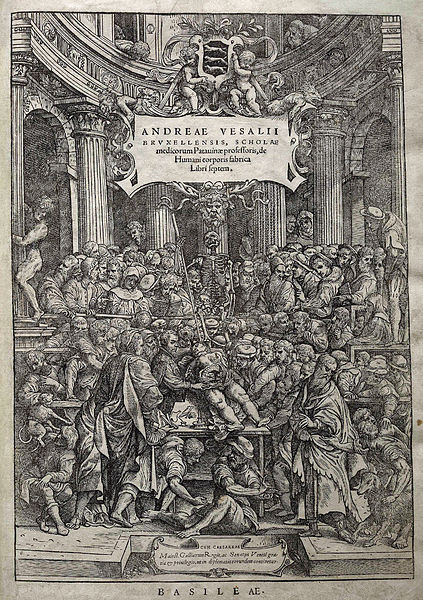
The Scientific Revolution and the Enlightenment increased scientific inquiry and the accessibility of scientific knowledge. Organizations such as the Royal Society in London encouraged the sharing of information among researchers and consolidated information in works such as the “Philosophical Transactions of the Royal Society.” Technologies such as Boyle’s air pump, Hooke’s microscope, and Galileo’s telescope allowed new advances and made scientists believe that ordinary people could know about the laws of nature. Intellectually, a sense of optimism arose about what scientists could know about the world. The publication of works such as Vesalius’ De Humani Corporis Fabrica exemplifies the newfound value of understanding the world and the increased scientific literacy that resulted from sharing these new ideas in print.
For 1,000 years, European views of the body were based on the work of Galen and Hippocrates. This view of the body centered around four humors (blood, phlegm, black bile, and yellow bile) that reached equilibrium in every person. Patients were healed by apothecaries or barber-surgeons, and the most common healing technique was bloodletting. Vesalius’ De Humani Corporis Fabrica is based on Vesalius’ extensive experience dissecting corpses and studying the medical advances of the Renaissance. The book corrects many of Galen’s errors and was distributed and illustrated thanks in large part to the printing press. Vesalius continued to maintain some of Galen’s errors, but his work exemplifies the medical advances made during the Early Modern period and is the beginning of an age during which the human body became much less of a mystery to the scientific community.

Francis Bacon was a prominent courtier during the reign of James I of England and a foundational figure in the scientific revolution. He believed that scientists needed a new approach to gaining knowledge and understanding nature. Bacon disliked deductive reasoning and believed in the need for gathering facts and then coming to a conclusion – moving from particular information to generalizable hypotheses. This approach is known as inductive reasoning. Bacon’s life embodied the rise of constitutional monarchy and the epitome of Renaissance art and culture. In his book The New Atlantis, Bacon described an ideal society in which scientists collaborated and used their wisdom to improve the world. This idea became the foundation of the Royal Society of Britain.

Descartes was a rationalist and a proponent of deductive reasoning. He focused on trying to derive universal laws, exemplified by his statement, “I think, therefore I am.” Discourse on Method explains Descartes’ views on deductive reasoning and his belief that the true scientist was trying to develop laws about nature. He saw matter as either “thinking” or “extended,” with thinking matter being matter of the mind and extended matter being everything else. Descartes’ views about deductive reasoning directly oppose Bacon’s views about inductive reasoning; both men exemplify the transformed worldview that occurred as a result of the Scientific Revolution.

Galileo Galilei is known for taking advantage of the newly developed telescope to look at the stars. He discovered the mountains on the moon, that planets are different than stars, the four moons of Jupiter, and sunspots. Dialogue Containing the Two World Systems was published in 1632 in Italy, geographically near the heart of the Catholic Church. Galileo’s proximity to Rome meant that he was a target of persecution from the Pope. His explanations of the universe conflicted with traditional religious interpretations of the world, which threatened the Church’s authority and caused friction between Galileo and the Pope. Galileo was far ahead of his time in terms of his use of technology and his detailed observations of the sky. Therefore, his work is very reliable although not up to today’s scientific standards. Galileo knew that his work would be controversial, so it is possible that he wrote in a manner that was somewhat purposefully inflammatory, because his audience would have been the well-educated members of European society and members of the clergy. Galileo’s goal was to share his research and, to some extent, to prove to the Catholic Church that he was not going to give up on his work because of censorship. Dialogue Containing the Two World Systems compared Ptolemaic (earth-centered) and Copernican (sun-centered) views of the universe. The Pope was enraged at the publication of this work, and Galileo was sentenced to house arrest. However, he still managed to publish his Discourse on Two New Sciences, widely regarded as the foundation of modern physics.

Isaac Newton is considered the preeminent figure of science of his time period. He developed the universal law of gravity and had a mechanistic worldview. Mechanists believed that the world operated something like a clock and that nature adhered to mathematical principles. Newton focused on empiricism and believed in the “disenchantment of the world,” that is, that divine figures were not responsible for everyday occurrences, although he still saw the glory of God in the beauty of nature. Principia is a compilation of many of Newton’s major ideas, including his laws of motion, his laws of universal gravity, and his beliefs about mechanism. Isaac Newton represents the self-consciousness of the figures of the Scientific Revolution; the people involved in new scientific developments were keenly aware that they were making new, important discoveries that co-existed with superstitious views in a world still largely dominated by religion.

Political Theory and Social Commentary
The Early Modern period saw the evolution of both absolutism and constitutional monarchy. Religion played an important role in both the development and understanding of political philosophy, and it fueled the political and social debates between Catholics and Protestants during this era. One set of general beliefs during the beginning of the Early Modern period was that governments either needed to be republics or to be ruled by enlightened philosopher-kings. Regardless of the form of government under discussion, God was somehow involved in politics. One of the most widely known political tomes of this era is Machiavelli’s The Prince, in which Machiavelli describes the necessity for humanist government in which the ruler did anything possible to preserve order. The leadership of Ferdinand and Isabella of Spain exemplifies this type of government.
The Early Modern period saw the evolution of both absolutism and constitutional monarchy. Religion played an important role in both the development and understanding of political philosophy, and it fueled the political and social debates between Catholics and Protestants during this era. One set of general beliefs during the beginning of the Early Modern period was that governments either needed to be republics or to be ruled by enlightened philosopher-kings. Regardless of the form of government under discussion, God was somehow involved in politics. One of the most widely known political tomes of this era is Machiavelli’s The Prince, in which Machiavelli describes the necessity for humanist government in which the ruler did anything possible to preserve order. The leadership of Ferdinand and Isabella of Spain exemplifies this type of government.

Niccoló Machiavelli’s The Prince served as a major inspiration for Early Modern leaders. He believed that the job of a ruler (a prince) was to preserve order by any means necessary. He believed that coercion and strong-arming the population were par for the course for an effective ruler, as long as the end result was the increased strength of the state. He described virtú, which included the ability to change the world to align with one’s personal beliefs. Machiavelli admired Cesare Borgia, who ruthlessly built a state in central Italy. Machiavelli admired many Early Modern leaders and served as an inspiration for many more.

Desiderius Erasmus is often considered a pinnacle of Renaissance humanism and represents the spread of humanism to Northern Europe. He self-identified as a citizen of an international republic of letters, and he definitely existed as a citizen of Europe rather than as a citizen of one country. He collected adages and is known as the first author to make a living only from his writings. This was greatly assisted by increased use of printing to disseminate and sell his works, as well as his status as a courtier to many European leaders. Erasmus’ The Praise of Folly insists on the follies of religious practices and depicted modern society as played out on a stage. Erasmus was highly critical of the Catholic Church, but sought to reform it from the inside rather than through an external movement like Luther’s.

Castiglione’s Book of the Courtier is an important account of the experiences of Renaissance court life. It describes the ideal qualities of a male courtier and the perfect lady. The book represents the Renaissance and Early Modern focus on personal propriety and morality. Throughout the Early Modern period, Europeans were increasingly offended by and divided over issues of morality, exacerbated by the Protestant Reformation and re-assertion of religious morality. The Book of the Courtier exemplifies the Early Modern desire for distinct social norms and rules of propriety as well as the importance of the behavior of courtiers in courtly life.
Religious Expression
Before 1520, virtually every European Christian was a Catholic. Europeans were unified by a common religion, which included the central role of the priest and papal supremacy. Villages were centered around the Church, which meant that the religious upheavals of the Protestant Reformation were pivotal in the daily lives of Europeans. The relationship that most Early Modern Europeans had with the Church meant that religious literature was incredibly popular and widespread. One of the most important documents of the Protestant Reformation, the 95 Theses, spread across Europe in weeks because of the printing press, influencing both the speed of religious changes and the average citizen’s understanding of those changes. The individualism and religious doubt of the Protestant Reformation spread through pamphlets and literature, increasing the literate population’s access to these new ideas.

Martin Luther’s 95 Theses are known as the catalyst for the Protestant Reformation. Luther’s writings consisted mostly of pamphlets, which were the primary method of debate during the Reformation. Luther translated the Bible into German and encouraged each individual to read the Bible and create his or her own interpretation. Luther saw major problems in the Catholic Church, mainly focused around his belief that the Church misinterpreted and sometimes blatantly ignored Scripture. Luther attacked the top of the Church hierarchy and believed in salvation by faith alone, reaching heaven not through indulgences or self-sacrifice but through pure belief and faith. Luther’s ideals spread quickly throughout Europe, aided by the printing press, and by 1521, Lutheranism was a powerful force that considered the Pope to be the antichrist and denounced the abuses and corruption of the clergy. The 95 Theses are considered the beginning of the Protestant Reformation.

The Gutenberg Bible was the first major text printed using movable type and the printing press. It was considered the beginning of the revolution of printed books, which increased the availability of major works in Europe and helped to increase literacy in Europe. The increased availability of printed books helped spread the ideas of the Renaissance and the Protestant Reformation, and helped increase accessibility of the writings of Early Modern Europe to ordinary, literate citizens. The printing press helped spread Luther’s 95 Theses quickly and efficiently across Europe in 1517.

John Calvin escaped from France to Switzerland at the height of conflicts between Protestants and Catholics and became incredibly radicalized. He believed in predestination, the idea that when a person is born, God has already decided if he or she will go to heaven or hell. By 1541, Calvin gained political control of Geneva, Switzerland, and set up a civic system in which religion was directly related to politics. Very strict religious rules governed the moral life of the city and were essentially related to Calvin’s belief in predestination: the pious were morally upstanding citizens, and the condemned needed to be controlled and prevented from doing bad deeds. Calvin exemplifies the rapid spread and re-interpretation of Luther’s ideas during the Protestant Reformation and the multiple factions that sprang up as a result of newfound religious awareness.
Literary Expression

The expansion of education and various religious controversies in the Early Modern period opened many people up to reading and encouraged publication of a variety of works. Scholars rediscovered Classical drama, wrote plays themselves, and presented them to a variety of audiences, which allowed illiterate people to experience literature. For those who could read, the most popular works were religious, but travel writing, pamphlets with scandalous stories, and how-to manuals were also popular. Prose fiction became widespread, exemplified by Cervantes’ Don Quixote and its influence on the Golden Age of Spain. Italian became a literary language, and English playwrights rose to prominence. Across Europe, vernacular literature and drama spread because of the increased use of the printing press and the humanistic encouragement of literary production.
Painting, Sculpture, and Architecture: Art of Early Modern Europe
Overview
When you think of the beginning of Western art, you usually think of the Renaissance. Titans such as Leonardo, Donatello, and Michelangelo have become the icons of the Renaissance and Europe in the Early Modern period. The art that they and countless other artists created defined the time in which they lived. Their ingenuity and creativity helped drive Europe away from the Middle Ages towards a Europe that we recognize today. Conversely, the time period defines them and their art. Therefore, today we can look at the works from the Renaissance and recognize historiographic themes in them. We will look at art beginning in the Renaissance all the way up to the late 18th century when the Early Modern period ends. By doing so, we can recognize some of the themes and transformations of Early Modern Europe both in art and in history.
The Renaissance: The Rebirth of Arts and Imagination

The Renaissance was an era when learning and inquiry were beginning to take hold within society over what is sometimes considered to be the dogma and mysticism of the Middle Ages. It was a “rebirth” (Renaissance literally translates to rebirth from Latin) of ideas and art of the Ancient Greeks and Romans. Society saw a rise in ingenuity, creativity, ambition, and individualism in commerce, politics, and in intellectual circles. Achievement in art especially rose to an entirely new level during the Renaissance. Great artists whose names were known throughout Europe created masterpieces using new techniques and styles such as perspective, shadowing, and detailed emotion. However, the Renaissance was not one well defined, uniform transformation of Europe. Depending on where one was in Europe, the Renaissance was a different experience. Renaissance art in Italy and southern Europe was marked by distinctly classically Grecian style and themes. The Northern Renaissance had a more sober style, less focused on mythology and more on daily life. Also, the Renaissance does not imply a complete overhaul of society. Many elements of continuity remained. Society and culture was still unbelievably saturated with the Catholic Church and religion and the Church was still the major power in Europe, greatly influencing the art of the day.
Below are some of the most famous works from the Renaissance. While looking through them, think about the scenes that are depicted in the paintings. Are there any trends? What looks visually appealing to you? What doesn’t look as good? What did beauty mean during the Renaissance, do you think?

The painting to the right, Allegory of Spring or Primavera by Botticelli incorporates many of the themes that were mentioned above. The painting includes several figures from Roman mythology such as Venus, Cupid, and the three Graces. Yet we can see the Christian influences in how Venus is standing. Her position and gesture would signify to anyone viewing this during the Renaissance that she is meant to represent the Virgin Mary. Also, the orange trees in the background represent the financial powers that were emerging at this time. The oranges were a symbol of the infamous Medici family, the family who commissioned this painting, who had become the rulers of Florence due to their success in the financial market.

Raphael’s The School of Athens represents the value of classical ideas in the art world of the Renaissance. The painting depicts several prominent philosophers of Ancient Greece coming together to share knowledge in a large, open building. The image represents how the Renaissance idealized the Ancient Greeks, and sought to revitalize the teachings of philosophers such as Aristotle and Plato.

Michelangelo’s painting to the left represents the influences of the patronage system on Renaissance artists. The patronage system involved wealthy individuals or institutions sponsoring artists requesting specific works of art, which supported artists’ careers. This system allowed talented artists to gain recognition and live a relatively comfortable lifestyle, but it also bred resentment among artists who did not receive such support. Michelangelo was sponsored by Pope Julius II, who commissioned the Pietá, and the Sistine Chapel, some of the greatest works of Western Art; Michelangelo’s wonderful statue of David was commissioned by members of Florence’s important mercantile class. The patronage system was a hallmark of Renaissance artistic and cultural life, and Michelangelo is a prime example of its positive outcomes.

The dome of the Florence Cathedral was designed and engineered by Filippo Brunelleschi in 1436. Before and during construction, the dome was thought to be an impossible feat. Its successful completion launched Brunelleschi to a level of stardom shared by Leonardo and Michelangelo. The Florence Cathedral still stands in Florence, Italy today and is a symbol of city pride for the dwellers of Florence.

This painting from the Northern Renaissance is different from paintings of the Italian Renaissance in that it portrays ordinary people in their ordinary lives. Many of the paintings by Brueghel depict peasants and food in some way, reminding us how important food was to peasants in their daily lives and political decisions. When peasants revolted during this time, it was often because of a lack of food.
The 17th Century: Glory, Warfare, and Crisis

The 17th century marks a change in European society and politics as well as a change in art. Much of the art, especially in Italy and France, evolved into a lavish, ornate, and overly embellished style, as seen in the fountain above. This was a time when great monarchs, with absolute power, emerged in Europe and used art, and architecture especially, to show off their glory. The 17th century was also a time of deep religious schisms, warfare and power. During the century, some countries, like Spain, went into economic crisis, partly as a result of the bloody warfare, while others, like the Dutch, flourished.
Looking at the paintings below, think about how the artists’ use of color, light, and perspective changed. Do you these paintings are more or less relatable than the paintings from the Renaissance?

This painting records the surrender of the town of Breda by Dutch soldiers to the Spanish (1625). In the center is a Dutch commander who is giving the key to the town to the Spanish, who accepts them with some amount of grace. The painting was meant to evoke Spanish national sentiment even though the age of Conquest in the “New World” for them was coming to an end.

This painting is also by Velazquez, but is a very different style. Instead of showing off Spanish military might, it show ordinary poor people in Spain. The artist wanted to honestly portray the poverty that afflicted the lower classes as a result of the decline of Spain as a world power.

This painting tells the opposite story of the one above. In contrast to Spain, the Dutch economy flourished during the 17th century. Because of their upper hand in trade, an urban merchant class emerged that could afford comfortable and sometimes decadent lifestyles. In this painting you can find rugs, paintings, and expensive musical instruments that signify wealth.
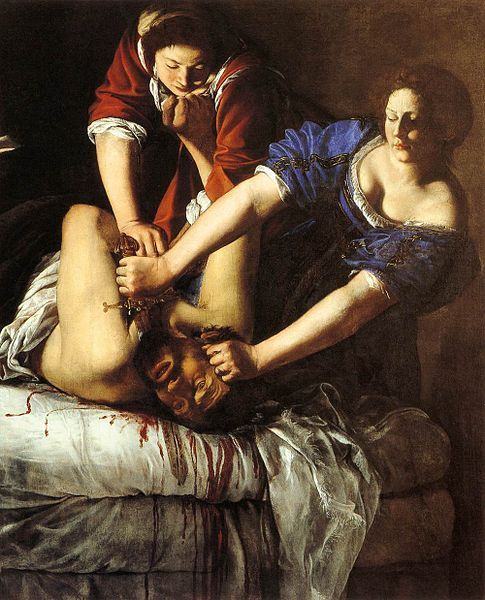
The Protestant Reformation, which began in the 16th century, was taking root in Europe much to the chagrin of the Catholic Church. One of the Catholic Church’s responses was to sponsor elaborate, emotional religious art to bolster the Church’s power and influence. The painting is by Gentileschi, one of the few women artists from her day. She was a part of the Catholic Counter-Reformation movement, which explains the bloody scene she painted. The story of Judith slaying Holofernes comes from the Apocrypha (books not included in the Bible) and she depicts the story emotionally and graphically in order to stir audiences.
An Age of Enlightenment
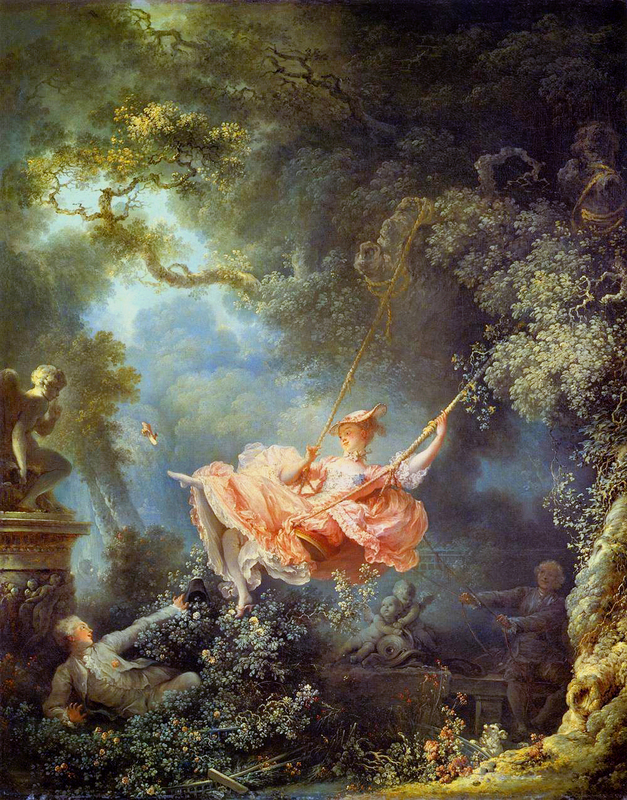
This is a painting by Jean-Honoré Fragonard in the French Rococo style which comes out of the 18th century. Though it is not as opulent as the early 17th century style, it is still lavish. It is interesting to begin the 18th century with this painting from France. The subjects of the painting are of the upper class and seem care free. By the end of the 18th century in France, the monarchy and the total social order had been overthrown by the French Revolution. The 18th century saw the birth of the Enlightenment and a call for rational thought. It also saw monarchs like Louis XIV and Louis XV of France who were some of the most powerful monarchs in Europe. Yet by the end of the century, a drastic shift occurred in history. The French Revolution shook up Europe so powerfully that it marks the end of the Early Modern period and the beginning of the Modern period we know today.

This painting is also by Fragonard who painted The Swing. It shows a young woman reading a book. This displays the increased general knowledge during the day. Women as well as men were reading more and debating in intellectual circles about new philosophies or scientific theories.

A Rake’s Progress takes us away from France and away from the upper classes. This painting by William Hogarth shows the less refined society of Europe, and comes to us from England. The painting was actually originally an engraving, in a series of eight showing the fall of an immoral man, or rake, into poverty and poor society. In this painting, the rake is in a gambling houe, losing his fortune among other immoral men. The fact that the paintings were engravings allowed them to be printed and widely circulated. This speaks to the growing popular culture that was emerging during the time.

The last painting is of the oath of the Horattii who were Roman soldiers. Painted by David during the movement known as Neoclassicism, the painting encapsulates many trends of late 18th century. It is full of symbolism of the number three, which was important to the Enlightenment movement and also shows ancient Roman personages, which coincides with the movement to return to the simple style of the Ancient Greeks and Romans. If you think of buildings constructed during this time, they were built in a Greek or Roman style. A prime example are the early federal buildings in Washington D.C.
Now that you have looked at paintings from the Renaissance to the end of the 18th century, what do you think are the major way that art has change? How do you think art has reflected society over the centuries and how has the conection between and society changed?
Music of Early Modern Europe
Overview
There is no singular musical piece that perfectly encompasses the early modern period. Music in Europe during this time varied greatly both from era to era and from region to region. This section hopes to enlighten the reader by demonstrating musical pieces from many different times and regions and to show the various instruments that were used in compositions. We hope that the reader will be able to identify common themes to Early Modern musical compositions.
Renaissance Music
Renaissance music has a number of distinct characteristics that separate it from previous styles. In particular, Renaissance music focuses more on the blending of harmonies and melodies. Renaissance music also included more emotional phrasings. As with Renaissance paintings and sculptures, Renaissance music was generally commissioned by rich and powerful men. Some of the musicians featured on this page were the official court musicians for various nobles. As such, many of the performances in this time took place in royal courts for a very elite audience. Amateur musicians, however were known to perform on busy street corners or in crowded markets.
Heinrich Isaac was a contemporary of Josquin des Pres (some of his songs are elsewhere on this website) and composed this religious piece, Benedictus in the 16th century. The listener may notice some 3-part rounds occurring at points in the song, which are characteristic of the music of the time.
Diego Ortiz was a composer in the court of Philip II of Spain who published important pieces that incorporatedad both instruments and vocals. This piece, Canzona in C Minor was written sometime in the 16th century and was originally arranged for a brass quartet.
This piece was composed by Giovanni Pierluigi de Palestrina in the 16th century. Palestrini composed this song, entitled Exaudi Domine, as a 4-piece motet, a word that illustrates the highly varied composition of the song.
Josquin des Pres is considered one of the most important Italian composers before the 17th century. Martin Luther is quoted as saying, “Josquin is master of the notes, which must express what he desires.” This particular piece, El Grillo, is noted for its use of dynamics and emotional phrases throughout the song.
Ludwig Senfl was the composer to the court of Emperor Maximilian I and as such, was commissioned to write numerous musical pieces for the court. This song, entitled Ich Weiss Nit was composed in the 16th century and features a few ascending and descending scales.
Renaissance Instruments
The instruments used in the Renaissance era may look a bit familiar to modern musicians. They can be considered predecessors to modern musical instruments and share many features with their respective instrument.

The shawm may remind one of a modern day oboe. The shawm was a popular instrument during the Renaissance era, and was developed in the 12th century.

The sackbut is an instrument which later evolved into the modern day trombone. It was popular in 16th century Renaissance music and grew to replace the sliding trumpet.

The harpsichord was an instrument that was used widely during the Renaissance era. Much like a piano, it produces music pressing keys but a harpsichord, unlike a piano, plucks a string to create a sound rather than striking the string with a hammer. This particular harpsichord was constructed in 1646 in Belgium.

The lute was a common instrument in Renaissance era music. The lute is a fretted string instrument, a bit like a modern-day guitar. Leonardo da Vinci was among the many Renaissance artists that played the lute.
Classical Music
Don Giovanni (1787) is an opera written by Wolfgang Amadeus Mozart. The opera focuses on a sexually promiscuous young prince whose demise is brought about by his own arrogance. This is the overture, the musical introduction, to the opera as a whole; this piece would be the very first thing audience members would hear. Needless to say, the piece would need to set the mood for the rest of the play. In this opera, Mozart also chose to call back the overture at the very end of the opera, creating a cyclical feeling of the music and the play.
Perhaps to some listeners, this piece is quite familiar. Not much is known of the history of Canon in D, but it is know that the piece was written in the late 17th century by German composer Johann Pachelbel. The name comes from the musical technique used in the song known as canon where melodies imitate each other (songs like Row, Row, Row Your Boat are canons where the melodies are identical rather than similar).
The exact year that Italian composer Antonio Vivaldi wrote this piece is not known, but it is assumed that it was written in the later part of Vivaldi’s career, or around the early 18th century. This particular piece is an example of a cantata (literally “sung”). Vivaldi was known as an exuberant composer who put great emotion in his musical pieces. He is a contemporary of Bach and, in fact, Bach transcribed a few of Vivaldi’s pieces for his own concerti.
Originally published by the HistAngelProject under the terms of a Creative Commons Attribution 3.0 United States license.
